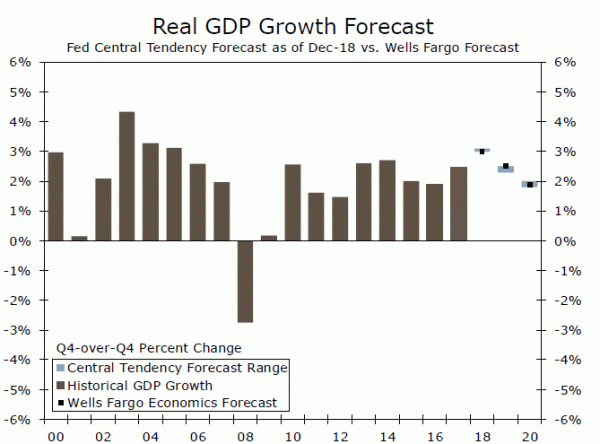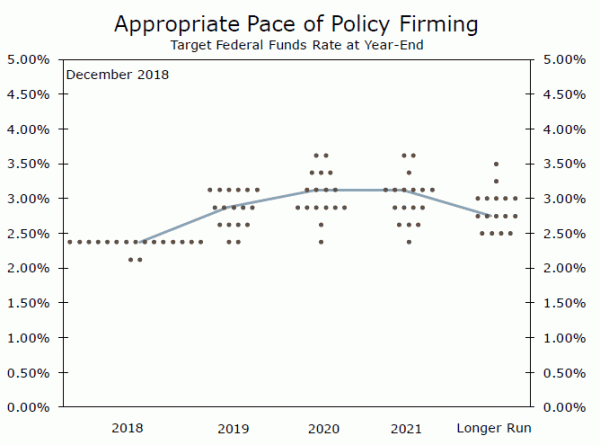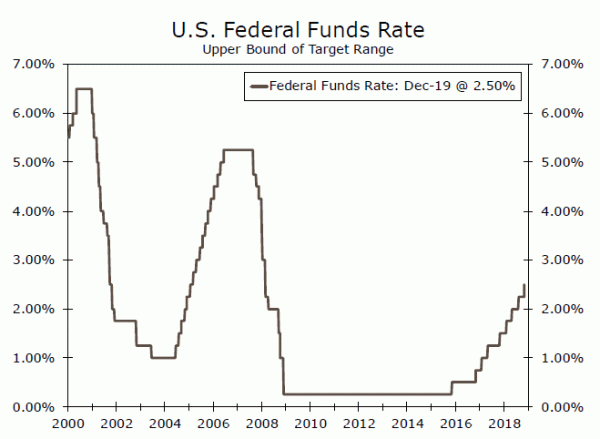The FOMC raised its target for the fed funds rate by 25 bps at its policy meeting today. But the Fed also acknowledged that it is moving into data-dependent mode.
The Dots Show Only 50 bps of Tightening in 2019
The Federal Open Market Committee (FOMC) raised its target range for the fed funds rate by 25 bps today. There were no dissents in the decision to raise rates. The Fed has now hiked rates by 225 bps over the past three years, 100 bps of which have occurred in 2018 (top chart). A few weeks ago, there was nearly universal agreement among analysts that the committee would indeed hike rates today by 25 bps. But some softer-than-expected data in recent weeks in conjunction with volatility in financial markets led some analysts to expect that the FOMC would refrain from tightening further today.
Although the committee did hike rates by 25 bps today, it dialed back its assessment for further tightening. The FOMC had been stating that “further gradual increases in the target range for the federal funds rate” would be needed going forward. The statement now reads “some (emphasis ours) further gradual increases…” In other words, the guidance for further rate hikes is not as open ended as it was in the last policy statement. More formally, the median FOMC member expects 50 bps of additional tightening next year rather than the 75 bps that had been expected in September (the last time the FOMC made its forecasts publically available). The median FOMC member also looks for an additional 25 bps of tightening in 2020 (middle chart).
The FOMC also acknowledged that it is moving into data-dependent mode. The committee continued to state that the “risks to the economic outlook appear roughly balanced.” But today the FOMC added that it “will continue to monitor global economic and financial developments and assess their implications for the economic outlook.” In short, weaker-than-expected data, both in the United States and/or in major foreign economies, could derail further rate hikes, at least for the foreseeable future. Continued volatility in financial markets could also cause the Fed to pause. The FOMC also reduced its forecast for GDP growth next year. The central tendency range of forecasts for GDP growth in 2019 now spans from 2.3% to 2.5%, down about ¼ percentage point since September (bottom chart).
We recently made some changes to our forecasts as well. We reduced our outlook for Fed tightening next year from 75 bps to 50 bps due, at least in part, to the downward adjustment we made to our inflation forecast. We look for the FOMC to hike rates by another 25 bps at its March meeting before going on a long pause until September. But we acknowledge that the timing of any future rate hikes remains uncertain and will depend on incoming data. The economy has decelerated a bit in recent months, but growth clearly remains positive. If, as we expect, growth remains solid in coming months, then we think that the outlook for future rate hikes, albeit at a slower pace, remains reasonable.















